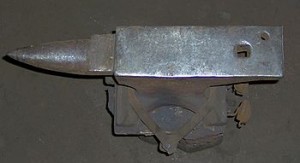Today I was looking at the C Marshall Fabrication Machinery Shears, and, as most of you who have been reading my post will know, that can lead to very odd places.
Now, like most people, when I think of plate armor I think of Camelot, the Round Table, the Knights, etc., but interestingly enough, it was the Greeks, then the Romans who were the first “knights”.
The first plate armor was made of Bronze, but was only worn by elite soldiers as it was expensive as bronze is a combo of copper and tin. Today, most of us could tip up the cushions on our couch and find enough pennies to plate an army, but back then copper wasn’t as readily available.
So, as with everything, cost drove the Greeks and Romans to abandon it, particularly after the fall of the Roman Empire.
I mean really, if your empire is already fallen what do you need armor for right?
Of course things picked up in the 14th century and plate armor once again had a place in the world, especially with steel being used as the primary material.
However, it was still costly and time consuming to make, and only the upper strata could afford to buy it. Then of course you had to be strong enough to wear the stuff.
That’s where the knights came in. The knights, being nobility (and having to prove it with patents of nobility), were the only ones who could afford such a luxury.
Then the musket came. Thus marked the beginning of the end for plate armor…well the armor we’re talking about anyway.
The steel used for plate armor was great for swords and arrows, but just a smart man doesn’t bring a knife to a gun fight, he doesn’t pretend that his plate armor is going to stop a bullet either.
Now to my wrap up. I like stories and notions of alternative history. I like the ‘what if’ factor in them.
Many writers who write such, often focus on ‘what if a tank went back in time’ or ‘what if an airplane went back in time’. I like to think outside the box a bit, as those of you who know me can attest to.
What if an entire line of C Marshall Fabrication Machinery products were dropped into Germany in 1632 in the middle of the Thirty Years War? Mind you this is a war that completely devastated what is now Germany and in my opinion set the tone thereafter for the German people. As a people, they were never going to let that happen again. And that mind set eventually led too…well you know the rest there.
Think about it. What if they were given the tools to completely arm every soldier regardless of income or status? It could have given them the edge and victory instead of devastation. That victory could have then changed their mindset completely, therefore affecting the rest of history in so many ways.
I will let you mull that over, but a few words come to mind. Hitler, Holocaust, WWII.
What if?




